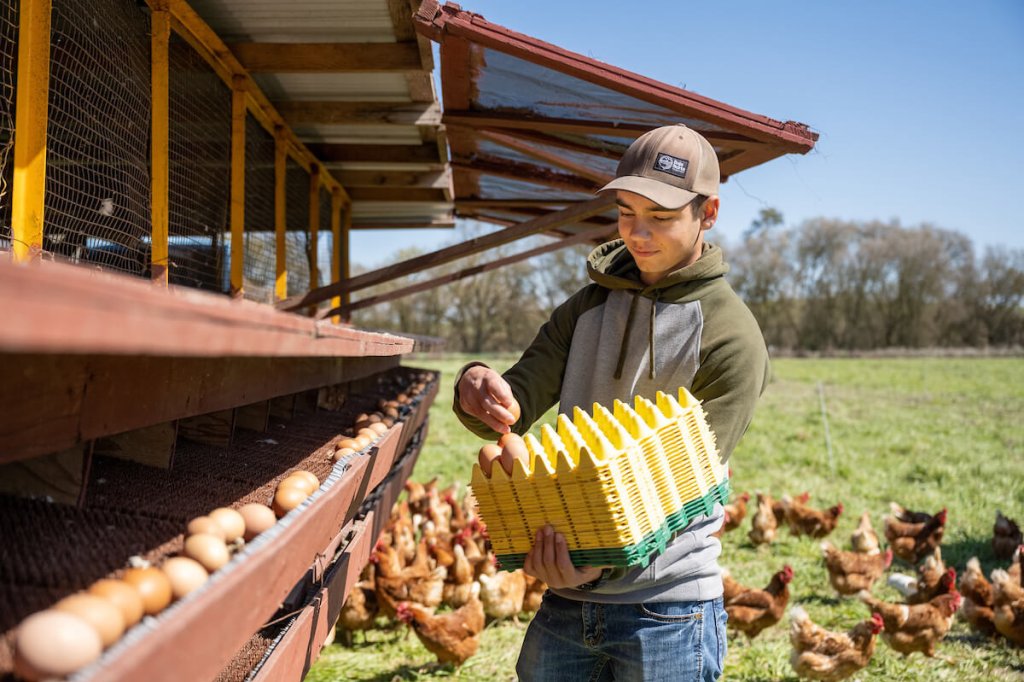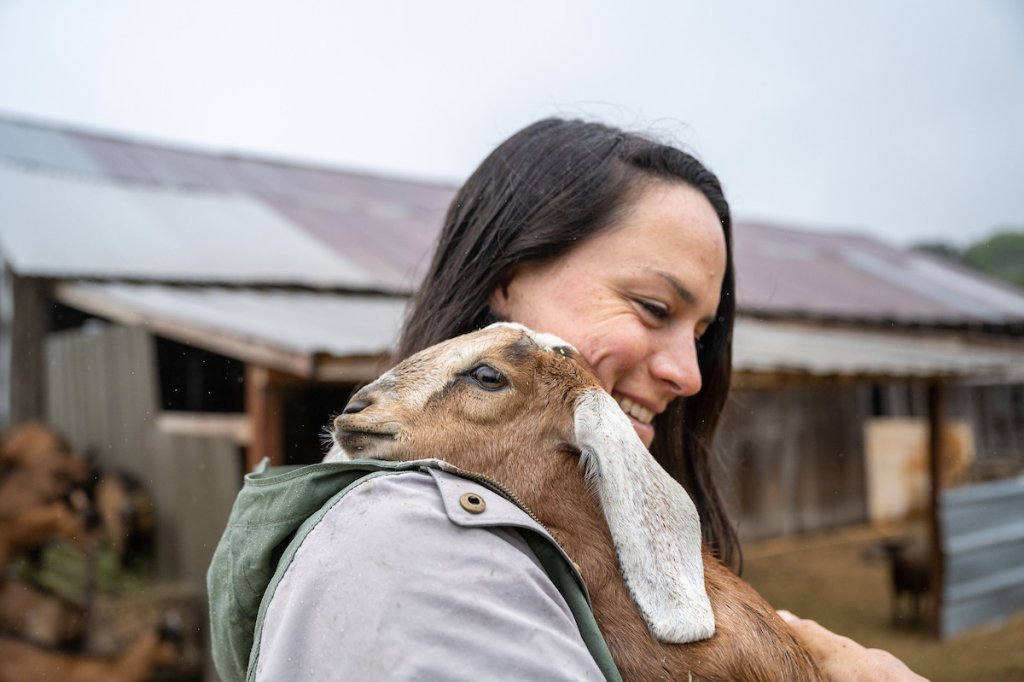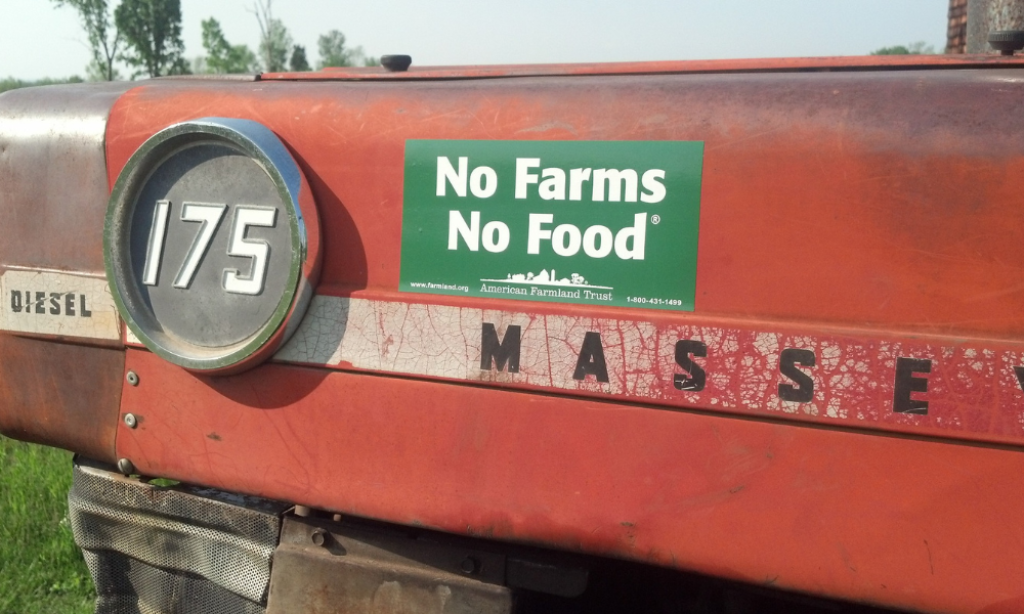What do COVID-19 and Climate Change Have in Common? They Both Threaten the Nation’s Food Security.
American Farmland Trust’s new report shows how the destruction of California’s prime agricultural land is weakening our national resiliency to future shocks and public health challenges.
May 20, 2020, SACRAMENTO, Calif. — With the novel coronavirus pandemic, millions of Americans have seen empty grocery shelves for the first times in their lives. We have seen how essential farmers are to a safe food supply, and how they innovate rapidly to meet demand as their markets suddenly shift. But in the world’s largest agricultural state, some of the most productive farmland and ranchland are being developed without consideration for future food supply needs, environment and public health concerns.
This agricultural land loss is not only threatening the nation’s food security, it’s being done in an almost invisible manner that’s often overlooked, according to “Farms Under Threat: The State of the States,” a new report by American Farmland Trust. And it is having a devastating effect on California’s ability to reach its carbon neutrality goals and support cleaner air quality standards for public health.
“California is the nation’s leading agricultural state, growing more than a third of vegetables and nearly two-thirds of fruits and nuts eaten in the United States,” explains Kara Heckert, AFT California regional director. “The state exports many agricultural commodities not grown anywhere else. It’s not in our national interest for this vital farmland and ranchland to be paved over, fragmented or converted haphazardly into residential, commercial, energy and industrial uses.”
The new AFT report shows the extent, location and quality of each state’s agricultural land and tracks how much agricultural land has been converted in California using a sophisticated data–mapping system. It identifies the most important farmland and analyzes its productivity, versatility and resilience. This allows AFT to identify the “Nationally Significant” agricultural land best suited for long-term, intensive crop production, especially vegetables, fruits, nuts and staple grains.
The report also reviews the six most widespread programs and policies nationally for protecting farmland, and compares California against the rest of the country, with the Golden State ranking in the top 12 overall. Despite advances, much more must be done.
California’s Score: California scored among the nation’s top states for policies and programs that protect agricultural land from development, promote farm viability and facilitate the transfer of agricultural land, according to AFT. However, the state also scored among the highest in the nation for the threat of agricultural land being converted to urban and highly developed land use, or UHD, or low-density residential land use, or LDR. The state invested only $0.11 per capita in permanently protecting agricultural land. And only 0.1 acres of agricultural land was developed per new person.
In contrast, Delaware earned the top score among states for average funds spent per capita per person/year at $6.03, and North Dakota developed 4.1 acres of agricultural land per new person, according to AFT’s report.
This relatively low investment in farmland protection occurs despite California’s working landscapes providing more than $333 billion in sales, 1.5 million jobs and $85 billion in earnings in 2018. The agricultural sector accounted for the lion’s share at $264 billion, according to University of California Agriculture and Natural Resources’ “California’s Working Landscapes” report in November 2019.
Unfortunately, most development is happening on the highest–quality agricultural land, according to AFT’s research. This is happening statewide with the “Nationally Significant” land being developed most rapidly. In fact, the finest half of California’s agricultural land was 202% times more likely to be converted to other uses than the rest of the state’s agricultural land.
“AFT supports a smart–growth approach to planning and policy that conserves these valuable agricultural resources and fosters growing resilient cities,” explains Kara. “It’s essential we avoid developing the highest-quality agricultural land and instead direct new development towards land less suited for productive working landscapes. Once this precious resource is gone, it’s gone forever.”
The threat is more than just urban sprawl. California’s prime agricultural land is disproportionately threated by LDR, a more insidious kind of development identified by AFT researchers. About 32% of California’s farmland acreage was converted to LDR, while 68% of conversion was to UHD.
“We all recognize urban sprawl, but LDR is a serious, overlooked problem,” explains Kara. “LDR is where you see housing developments popping up around agricultural fields. They aren’t suburban, they are exurban and often are large–lot developments. In California, LDR is 25 times more likely to be converted to UHD use than other agricultural land. It’s not immediately visible to policy–makers, which makes it challenging to develop an adequate policy response.”
Farmland’s Benefits to Public Health and Environment
California’s agricultural land provides multiple environmental and public health benefits often overlooked. Along with a valuable local food source, this natural capital provides benefits such as recharging the state’s groundwater, controlling floods, fires, and erosion, providing habitats for fish and wildlife, pollinating plants, controlling pests, sequestering carbon, removing pollutants from the air, creating space for outdoor recreation, attracting tourists and providing beautiful scenery.
An acre of agricultural land in California emits 58 to 70 times less greenhouse gases than an acre of developed land, according to AFT and UC Davis research. If the annual loss of farmland to urban development in California was reduced by 75% by 2050, that could reduce greenhouse gas emissions equivalent to removing 1.9 million cars from California roads annually, which would have a significant impact on air quality.
When several governments announced plans to lower environmental standards or other related measures, David Boyd, UN special rapporteur on human rights and the environment, spoke out about the effect of environmental pollutants, especially communities in vulnerable areas.
“The science is clear,” he said. “People living in areas that have experienced higher levels of air pollution face increased risk of premature death from COVID-19. Similarly, access to clean water is essential in preventing people from contracting and spreading the virus.”
As Secretary Karen Ross of California Department of Food and Agriculture explained in Civil Eats recently, “When we nourish our citizens to build their immune systems to be healthy, that’s got to be one of the most important things that we can do, and when we can purchase within our local communities that helps the community, it helps families, and it helps our economy rebound.”
Policies and Programs to Conserve California Agricultural Land
AFT is focused on several state and regional approaches to stem further agricultural land loss in California. The state will have a budget shortfall of $54.3 billion because of the economic devastation wrought by the coronavirus, Gov. Gavin Newsom’s administration announced in early May. Despite these financial constraints, AFT will accelerate our work together with our California partners to strengthen and/or adopt a suite of coordinated policies and programs to protect farmland with the following priorities:
Maintain Funding for the Sustainable Agricultural Land Conservation (SALC) Program: The SALC program was created by AFT jointly with other partners to permanently protect agricultural land with conservation easements. Since 2015, SALC grants have funded 100 agricultural conservation easements in 36 counties, covering over 112,000 acres of permanently protected agricultural land. With a 10% continuous appropriation of Greenhouse Gas Reduction Funds annually, this program has led to more than $180 million awarded since 2015. AFT salutes this progress and will continue to actively steward this program and engage both through its policy efforts and programmatic participation.
Help Farmers Stay Farming by Complying with Sustainable Groundwater Management Act: Across the state, farmers are struggling with developing on-farm conservation plans and reaching the water use reduction goals of SGMA. AFT understands the vital importance of funding technical assistance that supports these landowners’ success and ensures they remain viable businesses. That is why AFT is working to support the Sustainable Groundwater Management Act Ombudsman Bill (AB 3263) and other technical assistance funding for San Joaquin Valley farmers.
Plan for Agriculture, Not Just for Land Use: AFT will promote development of state and local policies that provide incentives for local governments to adjust their General Plans and Spheres of Influence to be consistent with high-density infill and related smart growth strategies that reduce and mitigate the urbanization of adjacent, productive farmland and protect groundwater recharge sites.
Increase Access and Funding for Land Access and Farm Viability Programs: The average age of a California farmer is 59 years old, and successful farm transfer and land access strategies have never been more critical for building the next generation of farmers and resilient food supplies. AFT supports state funding for land linking programs that connect next-generation farmers and ranchers to landowners, and will provide technical assistance to land trusts through our National Agricultural Land Network.
On-The-Ground Response in the Nation’s Top Farming Region
In the San Joaquin Valley, the nation’s agricultural powerhouse with more than 300 crops and livestock products, AFT has a direct response and action plan to stem farmland loss there. The region is among the state’s fastest growing, with development happening on the highest quality agricultural land, according to AFT’s research.
“Water scarcity, a changing climate, new regulations, slashed income due to pandemics, and a growing population are just some challenges farmers and ranchers face here,” says Kara. “Only four in 10 acres of the Valley’s agricultural land was determined to be of the highest quality. And only 9% of the Valley’s irrigated farmland is high quality and experiencing low-water stress.”
As many as 323,000 acres are projected to be converted into low-density urban and rural residential uses by 2050 in the San Joaquin Valley, according to supplementary spatial analysis research conducted 2015 to 2018 with AFT and Conservation Biology Institute. In fact, 55% of the Valley’s high-quality farmland has a high risk of development, according to AFT.
“This level of conversion jeopardizes sustainable food production, economic opportunities, public health, biodiversity and environmental benefits afforded by well-managed farmland and ranchland,” adds Kara.
AFT is spearheading farmland protection, regenerative agricultural methods, groundwater recharging and water conservation throughout the region. These efforts will serve as a model for scaling up these programs statewide.
Recently, AFT announced a $24.2 million San Joaquin Valley Conservation Collaborative, which is funded by a $10–million Regional Conservation Partnership Program grant from the USDA’s Natural Resources Conservation Service, with an additional $14.2 million coming from various state and local partners. The project will protect critical farmland, soil and water resources throughout the San Joaquin Valley.
##
American Farmland Trust is the only national organization that takes a holistic approach to agriculture, focusing on the land itself, the agricultural practices used on that land, and the farmers and ranchers who do the work. AFT launched the conservation agriculture movement and continues to raise public awareness through our No Farms, No Food message. Since our founding in 1980, AFT has helped permanently protect over 6.5 million acres of agricultural lands, advanced environmentally-sound farming practices on millions of additional acres and supported thousands of farm families.




